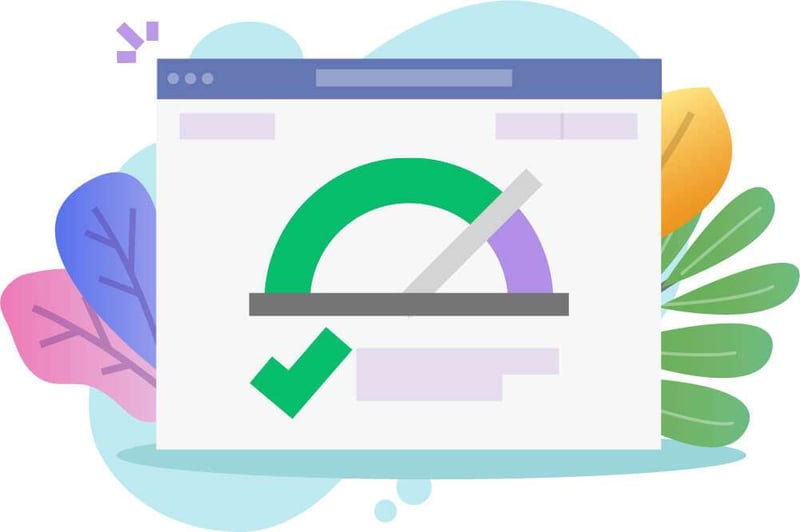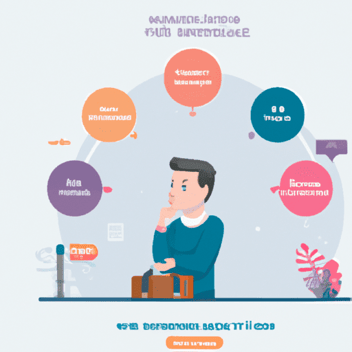6 consigli per creare ottime testimonianze dei clienti
Le testimonianze dei clienti sono uno strumento potente per aumentare la credibilità del vostro marchio e favorire le conversioni. Questo blog offre sei consigli pratici per reperire, raccogliere e utilizzare efficacemente le testimonianze dei clienti nella vostra strategia di marketing.
Seguendo questi passaggi, sfrutterete il potere delle esperienze reali per migliorare la reputazione del vostro marchio e raggiungere i vostri obiettivi commerciali.
Il compito dei team di marketing e di vendita è quello di posizionare i vostri prodotti o servizi in modo da attirare nuovi clienti e favorire la vostra crescita complessiva. Ma anche se i vostri addetti al marketing e alle vendite sono indubbiamente dei veri professionisti, non c'è nulla che possa sostituire il potere di vendita e di marketing di un cliente soddisfatto. E dare voce ai clienti soddisfatti nel posizionamento dei vostri prodotti o servizi non è solo una risorsa essenziale nel vostro arsenale di marketing. Tuttavia, mostrare esempi di un eccellente servizio clienti è spesso una risorsa che viene trascurata o sottoutilizzata.
Una parte della difficoltà nell'utilizzare le testimonianze dei clienti come componente della vostra strategia di content marketing è rappresentata dalla nebulosità del processo di reperimento e distribuzione delle testimonianze, soprattutto per le aziende più piccole che stanno ancora lavorando sulle loro strutture olistiche di vendita e marketing. Ma questo processo nebuloso non può essere trascurato, visto che l'85% degli utenti online si fida delle testimonianze dei clienti tanto quanto delle raccomandazioni di parenti e amici.
Come ci rivolgiamo ai nostri clienti con questa richiesta? Quali clienti contattiamo? Su cosa chiediamo loro di esprimersi? E una volta raccolti questi spunti e aneddoti, cosa ne facciamo e come ci assicuriamo che il loro valore venga realizzato e messo a frutto?
Queste sono solo alcune delle preoccupazioni che le aziende devono affrontare e risolvere quando creano le testimonianze dei clienti e le utilizzano per spostare l'ago della bilancia delle vendite e del marketing. Come nel caso del content marketing, avere semplicemente una buona idea non è sufficiente: le idee devono essere realizzate e portate a compimento. Per questo motivo, diamo un'occhiata a sei consigli per creare ottime testimonianze dei clienti e al motivo per cui le aziende dovrebbero riconsiderare (o semplicemente prendere in considerazione) il modo in cui le testimonianze dei clienti possono essere parte integrante del loro bagaglio di strumenti di vendita e marketing.
Fate le domande giuste (specifiche).
Non si vuole mai arrivare impreparati a un colloquio di lavoro, e lo stesso principio vale per chi si rivolge ai clienti per fornire una testimonianza. Prendersi il tempo necessario per esaminare come un cliente ha utilizzato il vostro prodotto o servizio, in che modo ha influito sui suoi obiettivi aziendali complessivi, ha generato nuovi contatti, ha stimolato le vendite e ha aiutato a superare gli ostacoli o le sfide del suo settore è fondamentale per porre le domande giuste e specifiche e per guidare le sue risposte in modo da garantire che la sua testimonianza sia in linea con gli argomenti che state cercando di evidenziare.
Alcune domande da considerare in questo senso sono:
-
Quali erano i vostri punti dolenti prima di entrare in relazione con noi?
-
Quali erano i vostri maggiori ostacoli al raggiungimento dei vostri obiettivi aziendali prima di lavorare con noi?
-
Cosa vi ha attratto inizialmente del nostro prodotto, servizio o soluzione?
-
Perché ha ritenuto che fossimo adatti alla sua azienda e all'etica che presenta?
-
In che modo il nostro prodotto, servizio o soluzione ha migliorato concretamente la vostra attività?
Parte dell'obiettivo della creazione di domande o argomenti con l'acquisizione di testimonianze di clienti è la creazione di una domanda che utilizzi un linguaggio che aiuti il cliente a parlare in modo diretto, conciso e specifico ai vostri obiettivi con questo tipo di contenuti di vendita e marketing. In poche parole, porre le domande giuste può tracciare una tabella di marcia per il perché e il come utilizzare la testimonianza settimane o mesi dopo, quindi è fondamentale fare i compiti a casa su quali domande o argomenti affrontare.
Caratterizzare i clienti più adatti
In qualsiasi scenario, è bene che siate in prima linea con il vostro piede migliore, e lo stesso vale per le testimonianze efficaci dei clienti. I clienti che sono veri e propri "disruptive" nel loro settore, che hanno un profilo elevato, che sono emergenti o che, per qualche motivo, sono un punto focale positivo nelle conversazioni del settore, sono i migliori in termini di garanzia che la vostra testimonianza raggiunga un pubblico ampio. Attira più attenzione e traffico e porta al vostro blog, sito web o e-mail.
Naturalmente, non tutte le aziende hanno tra i propri clienti una star, un cliente famoso o un personaggio di spicco, ma questo non significa che non si possa adottare una strategia per il cliente più adatto. Osservate le dimensioni dei vostri clienti, l'impronta complessiva, le tendenze di crescita o la posizione tra i contemporanei nel loro settore.
Se la missione, la visione o i valori di un cliente sono molto diffusi tra i concorrenti del settore, la ricerca di una testimonianza da parte di questa azienda può attirare l'attenzione di altri che aspirano a lavorare secondo gli stessi principi o standard. Supponiamo che un cliente abbia registrato una rapida crescita negli ultimi sei mesi e che le tendenze indichino che i concorrenti sono pronti a registrare la stessa crescita. In questo caso, una testimonianza può attirare i concorrenti a prendere in considerazione i vostri prodotti e servizi sulla base del vostro lavoro con l'azienda.
In breve, per individuare i clienti più adatti è necessario valutare i vostri clienti, la loro direzione generale e lo stato del loro settore.
Essere consapevoli delle diverse buyer personas.
In un recente articolo del blog, abbiamo discusso dell'importanza di creare contenuti per diverse buyer personas in varie fasi del percorso dell'acquirente. In breve, il modo di fare marketing per un amministratore delegato di una piccola azienda è diverso da quello per un capo reparto di un'azienda molto più grande. Lo stesso principio si applica alla creazione di testimonial eccezionali, ed è essenziale avere il testimonial giusto per le varie buyer personas per assicurarsi di posizionare il testimonial nel modo più efficace possibile.
Questo si riferisce anche a ciò che abbiamo discusso all'inizio di questo articolo sul porre le domande giuste e specifiche. Un CMO probabilmente parlerà dei vantaggi del vostro prodotto, servizio o soluzione in modo molto diverso da un capo reparto o da un manager, e i vantaggi che la vostra azienda offre loro saranno orientati verso ciò che fanno quotidianamente. Ciò significa che la testimonianza di un CMO sarà difficile da posizionare di fronte a un manager che state cercando di attirare, perché hanno preoccupazioni e priorità diverse.
Creare una varietà di testimonianze di clienti attraverso l'obiettivo di diverse buyer personas vi garantirà di parlare la lingua giusta alla persona giusta al momento giusto.
Impatti tangibili
È un cliché, ma lo è per un motivo: I numeri non mentono. I dati raccontano una storia. Lasciate che sia la matematica a fare il lavoro. Nella creazione di testimonianze efficaci dei clienti, è facile perdersi nello sviluppo di una narrazione da stracci alla ricchezza su come la vostra azienda abbia portato un cliente dal nulla a qualcosa. Questo è particolarmente vero se l'attività del cliente ha subito una crescita sismica ed esplosiva grazie al vostro lavoro - e che bel problema avere, vero? Ma il punto è che si generano nuovi contatti perché una testimonianza si concentra sull'impatto tangibile di un prodotto, di un servizio o di una soluzione. Per questo motivo, è fondamentale che la testimonianza si concentri sui modi concreti, in dollari e centesimi, in cui il cliente ha beneficiato del vostro lavoro.
Sì, tutti vogliono una storia che faccia stare bene. Questo non vuol dire che una testimonianza convincente non possa avere un elemento di interesse umano o elementi di pathos che facciano sentire un potenziale cliente caldo e confuso. Ma evidenziare come la vostra azienda abbia incrementato le vendite, ridotto le spese generali, snellito i processi e promosso una crescita sostenibile a lungo termine sarà molto più importante per quanto riguarda l'efficacia e il ROI.
Variazione dei canali di contenuto
Le testimonianze dei clienti non dovrebbero risiedere solo in una pagina del vostro sito web. Sarebbe come comprare una Ferrari per poi guidarla a 30 miglia all'ora nel quartiere. I social media, i blog, i whitepaper, i contenuti riservati, le campagne e-mail, il geofencing, i banner pubblicitari e una miriade di altri mezzi digitali di vendita e di marketing sono (e dovrebbero essere) un terreno di gioco per le testimonianze dei clienti, soprattutto nel mondo di oggi in cui sempre più contenuti vengono creati e distribuiti per essere condivisi attraverso le reti digitali. Vi siete presi la briga di creare un'ottima testimonianza di un cliente; dovreste esserne fieri e assicurarvi di sfruttare questa parte vitale dei contenuti di vendita e marketing attraverso i vostri vari canali per raggiungere il più ampio pubblico possibile.
Riproporre i contenuti
Insieme alla variazione dei canali di contenuto, è importante riproporre le testimonianze dei clienti per prolungarne la durata, aumentare il ROI e sperimentare come confezionare e posizionare una testimonianza in vari contesti. Che si tratti di effettuare test A/B con determinate parti di una testimonianza per diverse buyer personas o di sperimentare come distribuire le testimonianze attraverso canali come i social media rispetto a una campagna e-mail, è importante non essere troppo preziosi con le testimonianze. Come qualsiasi altro contenuto di vendita e marketing, nel mondo digitale di oggi tutto è modificabile, rielaborabile e abbastanza facilmente manipolabile in base al contesto o alle circostanze. La testimonianza di un cliente non è diversa.
Questo contenuto è disponibile in:
- Tedesco: 6 Tipps für die Erstellung guter Kundenreferenzen
- Inglese: 6 Tips for Creating Great Customer Testimonials
- Spagnolo: 6 consejos para crear excelentes testimonios de clientes
- Francese: 6 conseils pour créer d'excellents témoignages de clients
- Rumeno: 6 sfaturi pentru a crea mărturii excelente ale clienților
- Cinese: 创建优秀客户评价的 6 个技巧











Facci sapere cosa ne pensi.